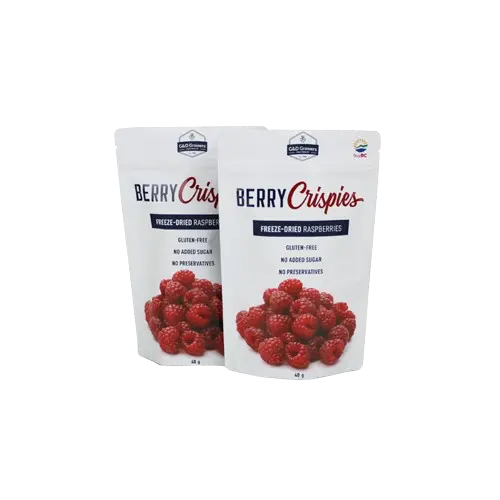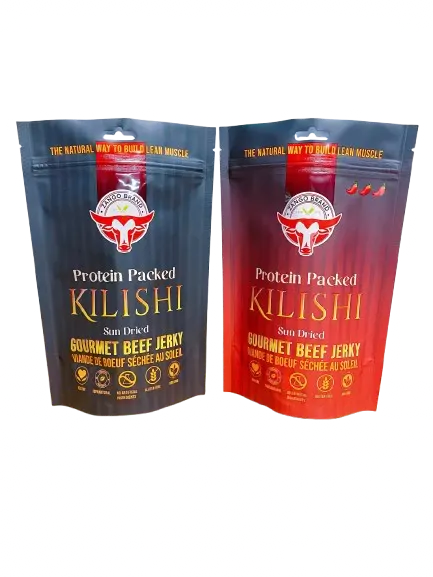WeChat:
+86-189 7322 3283
What’s app::
+86-13630093256
Content Menu
● Understanding Packaging Bag Design Templates
● Key Factors to Consider When Choosing a Packaging Bag Design Template
>> 3. Printing and Design Constraints
>> 4. Brand Identity and Aesthetic Appeal
>> 5. User Experience and Functionality
● Steps to Choose the Right Packaging Bag Design Template
>> Step 1: Define Your Packaging Goals
>> Step 2: Research Available Templates
>> Step 3: Evaluate Template Specifications
>> Step 4: Customize and Prototype
>> Step 5: Gather Feedback and Finalize
● Popular Packaging Bag Design Templates and Their Uses
● Tips for Designing with Packaging Bag Templates
● FAQ
>> 1. What is a packaging bag design template, and why is it important?
>> 2. How do I know which packaging bag template suits my product?
>> 3. Can I customize a packaging bag template to reflect my brand?
>> 4. What printing considerations should I keep in mind when using a packaging template?
>> 5. Are there sustainable packaging bag templates available?
In today’s competitive market, packaging is more than just a protective layer for products-it’s a powerful marketing tool that can influence consumer decisions and enhance brand identity. Choosing the right packaging bag design template is crucial for businesses aiming to create a memorable unboxing experience, protect their products, and communicate their brand values effectively. This comprehensive guide will walk you through the essential considerations and steps to select the perfect packaging bag design template tailored to your product and brand.

A packaging bag design template is a pre-formatted layout that outlines the structure, dimensions, and printable areas of a packaging bag. It serves as a blueprint for designers to create artwork that fits perfectly on the bag, ensuring that the final printed product looks professional and functions well. Templates often include die lines, fold lines, and bleed areas to guide the design and printing process.
Using a template helps maintain consistency, saves time, and reduces errors during production. Whether you are designing paper bags, plastic pouches, or luxury handbag packaging, a well-chosen template is the foundation of effective packaging design.
The first step in selecting a packaging bag template is to consider the product’s size, shape, and fragility. Packaging must accommodate the product comfortably without excessive empty space or tightness that could damage the item.
– For lightweight items like cosmetics or snacks, smaller, flexible pouches or paper bags may suffice.
– For bulky or delicate items such as handbags or electronics, sturdier boxes or bags with reinforced structures are preferable.
– Specialty products like wine bottles require specific templates designed to hold and protect the shape securely.
Choosing a template that matches your product dimensions ensures a snug fit and enhances the product’s presentation.
Packaging bags come in various materials, including paper, plastic, fabric, and biodegradable options. The design template must align with the chosen material’s characteristics:
– Paper bags often require templates that account for fold lines and glue points, as well as printable areas that avoid creases.
– Plastic pouches may need templates that include zipper placements or resealable features.
– Fabric bags might use templates focusing on stitching lines rather than folds.
Material choice impacts durability, sustainability, and the tactile experience, so select a template compatible with your packaging material.
Each printing method has limitations regarding color use, resolution, and placement of design elements. When choosing a template, consider:
– Printable area: Ensure your design fits within the designated print space without crossing die-cut or fold lines.
– Color mode: Templates should support CMYK color mode for accurate print colors.
– Minimum font size and line thickness: Maintain legibility by adhering to printing specifications.
– Special finishes: If using embossing, foil stamping, or spot UV, the template should indicate areas where these effects can be applied.
Templates often come with guidelines to help designers avoid common pitfalls and produce print-ready files.
Packaging is a direct reflection of your brand. Choose a template that allows you to express your brand’s personality effectively:
– Minimalist templates suit brands emphasizing elegance and simplicity.
– Vibrant, colorful templates work well for playful or youthful brands.
– Luxury brands might prefer templates that support layered packaging or special closures like magnetic boxes.
Consider how the template’s structure and printable areas can showcase logos, slogans, patterns, and other brand elements.
Packaging should be easy to open, reseal (if applicable), and transport. The template should facilitate:
– Convenient opening mechanisms such as tear notches or magnetic closures.
– Handles or straps for easy carrying.
– Protective features like inner compartments or dust bags for delicate items.
A functional template enhances customer satisfaction and encourages repeat purchases.
Eco-conscious consumers increasingly demand sustainable packaging. When selecting a template:
– Opt for designs that minimize material waste.
– Choose templates compatible with recyclable or biodegradable materials.
– Consider templates that allow for reusable packaging, such as cloth bags with branding.
Sustainable packaging can boost brand image and meet regulatory requirements.

Clarify what you want your packaging to achieve beyond product protection-brand promotion, customer engagement, sustainability, or cost-effectiveness.
Explore template libraries from packaging suppliers or design platforms. Look for templates that match your product type and material choice.
Check dimensions, printable areas, fold and glue lines, and compatibility with your printing process.
Use graphic design software like Adobe Illustrator or Canva to customize the template with your branding elements. Create prototypes to test fit, function, and visual appeal.
Collect input from stakeholders and potential customers. Refine the design and template choice based on feedback before mass production.
| Template Type | Description | Ideal For |
| Flat Bottom Paper Bag | Sturdy bag with a flat base for standing upright | Retail products, food items |
| Gusseted Bag | Side folds allow expansion for bulkier products | Clothing, groceries |
| Pouch with Zipper | Resealable plastic or foil pouch | Snacks, cosmetics, supplements |
| Magnetic Closure Box | Rigid box with magnetic flap for luxury feel | Handbags, electronics, gifts |
| Dust Bag Template | Soft fabric bag with drawstring or flap closure | Designer handbags, shoes |
– Use high-resolution images and vector graphics to ensure crisp printing.
– Keep important text and logos away from fold and cut lines.
– Maintain consistent typography and color schemes aligned with your brand.
– Consider adding interactive or layered elements for a premium unboxing experience.
– Test print samples to verify color accuracy and structural integrity.
Choosing the right packaging bag design template is a strategic decision that impacts your product’s protection, brand perception, and customer experience. By considering your product’s size, material, printing requirements, brand identity, functionality, and sustainability goals, you can select a template that not only fits your needs but also elevates your brand in the marketplace. Invest time in researching, customizing, and prototyping your packaging design to create a compelling and effective package that resonates with your customers.
Ready to transform your packaging and captivate your audience? Contact us today to discover the perfect packaging bag design template tailored to your brand’s unique story and product needs!

A packaging bag design template is a pre-made layout that guides the design and printing of packaging bags, ensuring accurate dimensions, fold lines, and printable areas. It is important because it helps create professional, functional, and visually appealing packaging that fits the product perfectly.
Consider your product’s size, shape, fragility, and the packaging material. Match these factors to templates designed for similar products and materials to ensure a good fit and protection.
Yes, most templates are fully customizable. You can add your logo, brand colors, slogans, and other design elements using graphic design software to align the packaging with your brand identity.
Ensure the template supports the CMYK color mode for accurate printing, respects minimum font sizes and line thickness, and avoids placing important design elements on fold or cut lines. Also, consider any special finishes like embossing or foil stamping.
Yes, many templates are designed for eco-friendly materials such as recycled paper or biodegradable plastics. Choosing such templates supports sustainability goals and appeals to environmentally conscious consumers.
Hot Tags: Packaging Bag Design Template, Custom Bag Templates, Printable Packaging Templates, Food Packaging Design, Product Packaging Templates, Custom Packaging Design, Packaging Mockup Templates, Professional Bag Design, Creative Packaging Templates, Digital Packaging Design